Girl presents after failed vision screening
A 7-year-old Asian girl presented to the Tufts Pediatric Ophthalmology Department for a comprehensive eye examination after a failed vision screening with her pediatrician.


Her mother reported a history of bilateral intermittent ocular redness over the preceding 6 months, which she attributed to ocular allergies. The patient’s pediatrician had recommended using over-the-counter eye itch relief drops as needed, and the mother reported giving these drops as directed without significant improvement in ocular injection. She did not otherwise have concerns about her daughter’s vision. The patient did not endorse blurred or double vision, new floaters, flashes of light, eye discharge, light sensitivity or pain at rest or with eye movements. Her mother denied recent fevers, chills, illnesses, medication changes or previous rashes, joint pain or swelling, history of tick bites, history of cold sores or fever blisters.

Source: Julia Watson, MD, Lianna Valdes, MD, Lana Rifkin, MD, and Catherine Choi, MD
Her medical history included seasonal allergies and a history of “colitis” after birth but no known autoimmune diseases or chronic infections. Her medications included loratadine as needed. Her family history was notable for high myopia in her mother. She had no known drug allergies. Aside from allergy drops, she was not on any ophthalmic medications and had no prior ophthalmic surgeries. She was born in China and immigrated with her family to the United States in 2019.
Examination
On exam, best corrected visual acuity was 20/25-2 in the right eye and 20/80 in the left eye. Refractive error was plano +0.75 × 75 in the right eye and +2.00 +0.75 × 65 in the left eye, but there was no improvement in vision with refraction in the left eye. Pupils appeared irregular with scalloped edges in both eyes and were sluggishly reactive but without relative afferent pupillary defect. IOP measured by iCare tonometry was 7 mm Hg in the right eye and 9 mm Hg in the left eye. Color vision was full by Ishihara color plates in both eyes. Confrontation visual fields were full in both eyes. The patient had fair stereopsis for her age and was found to have a fairly comitant intermittent exotropia of approximately 14 prism diopters to 16 prism diopters that was well controlled. Extraocular movements were full.
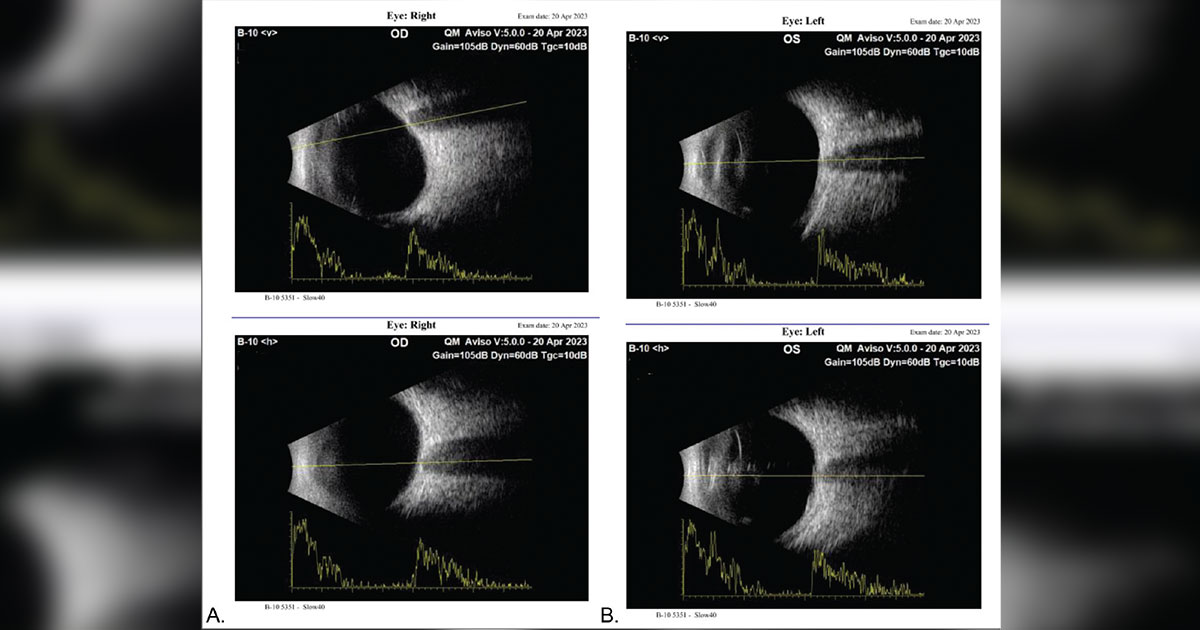
External exam was normal. On anterior segment slit lamp exam, she had normal lids and lashes and trace conjunctival injection in both eyes. Corneal exam was notable for significant pigmented keratic precipitates concentrated inferiorly in both eyes as well as linear subepithelial haze vs. early band keratopathy inferiorly in the left eye. She had trace flare in the right eye and 2+ flare in the left eye, with no active anterior chamber cell in either eye. Posterior synechiae were present in both eyes (Figure 1). There was pigment on both anterior lens capsules, and she had mild opacification of both lenses. The view posteriorly was hazy in both eyes, precluding evaluation of her optic nerve or macula in the left eye. However, a limited view of her fundus in the right showed a pink optic nerve with 0.1 cup-to-disc ratio and normal macula and vessels.
Initial imaging
B-scan (Figure 2) was obtained due to poor view to the fundus of both eyes and was unremarkable without evidence of vitritis, retinal detachment or masses.
What is your diagnosis?
Ocular inflammation
This child with bilateral ocular injection, keratic precipitates and anterior chamber flare with posterior synechiae has uveitis. Uveitic eye disease is commonly divided into infectious and noninfectious etiologies, and the location of disease (whether anterior, intermediate, posterior or panuveitis) can be useful in narrowing down the possible differential diagnoses.

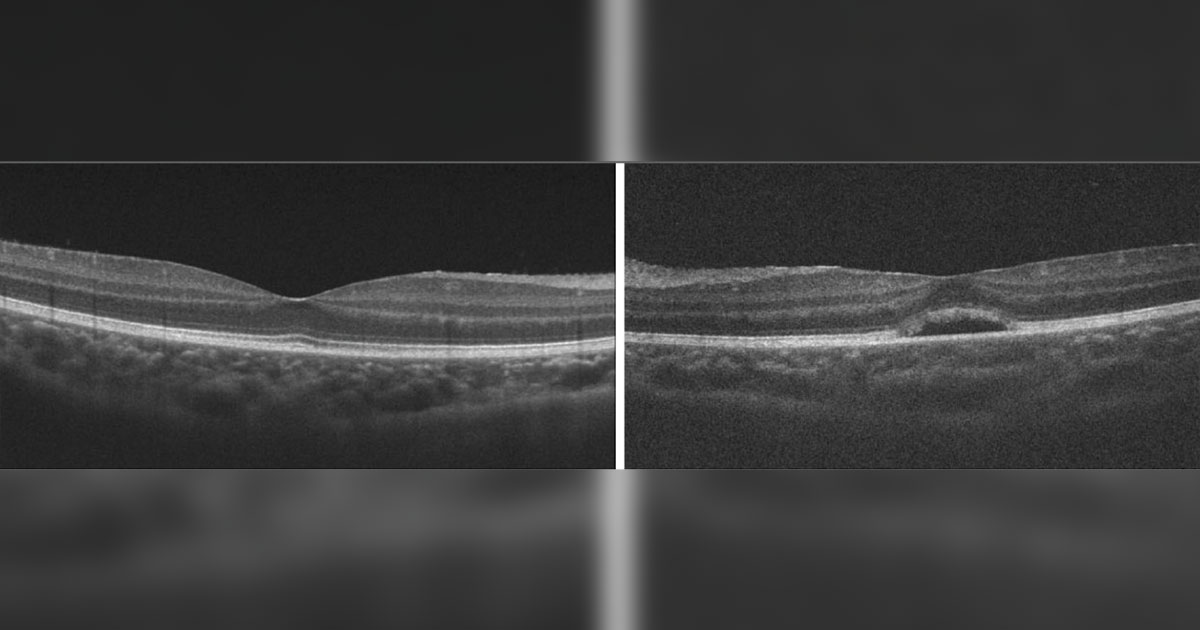
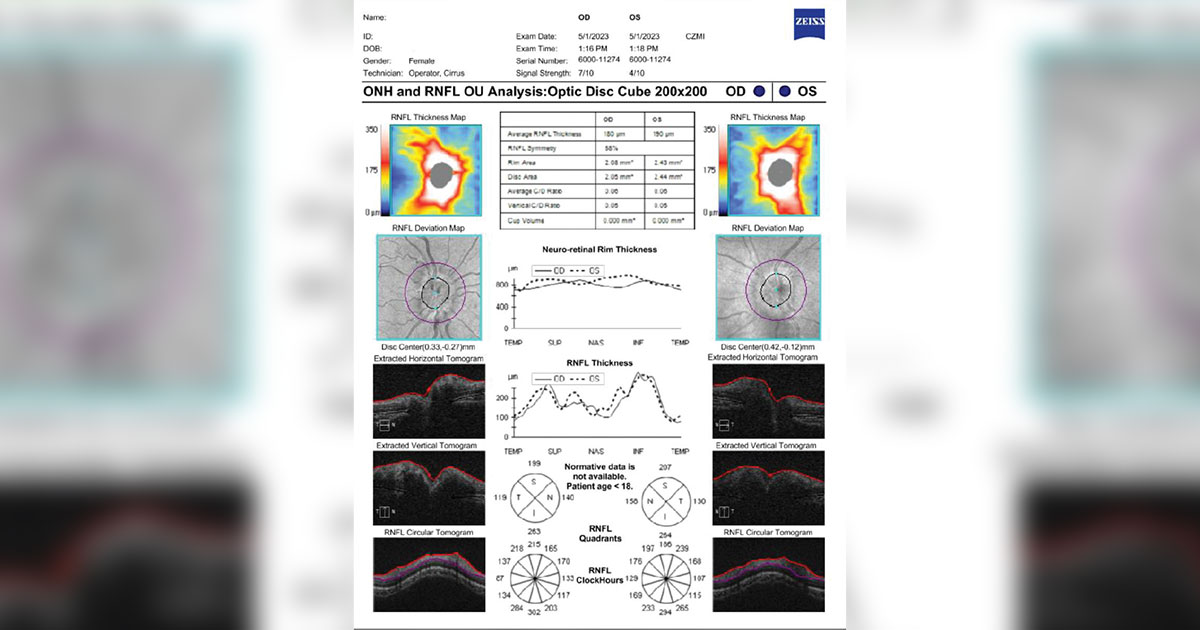
Pediatric uveitis is unique in that most cases are noninfectious, and the most common types of pediatric uveitis are idiopathic and juvenile idiopathic arthritis (JIA)-associated uveitis. Because of the vision-threatening and amblyogenic implications of uveitis in the pediatric population, it is crucial to perform a workup reflective of the broad differential. In this case of a child presenting with signs of chronic granulomatous anterior uveitis, JIA-associated uveitis was the leading differential diagnosis, especially as it is the most common (50% to 80%) non-idiopathic cause of anterior uveitis in childhood. However, it is commonly associated with episodes of joint inflammation and swelling, which our patient did not have. Other potential diagnoses included tuberculosis (especially pertinent given her fairly recent emigration from China), syphilis, tubulointerstitial nephritis and uveitis, and ocular sarcoidosis.
Workup and initial management
Initial laboratory workup included complete blood count (CBC), complete metabolic panel, urinalysis, antinuclear antibody (ANA), urine beta-2 microglobulin, HLA-B27, angiotensin-converting enzyme (ACE), lysozyme, FTA-ABS and QuantiFERON-TB Gold. The patient was started on prednisolone acetate 1% twice daily and atropine 1% once daily in both eyes. She was seen 4 days later by a uveitis specialist and found to have stable vision and IOP. On slit lamp exam, her anterior chamber still showed flare greater in the left eye than the right eye, and atropine appeared to have broken most synechiae in the right eye but not the left eye. An improved view of her lenses showed a clear lens in the right eye and 1+ posterior subcapsular cataract in the left eye. Lab work had partially resulted with ANA positive with titer 1:320, urine beta-2 microglobulin mildly elevated to 0.2, CBC with high platelets, urinalysis with trace protein, and negative QuantiFERON-TB Gold, ACE, lysozyme, HLA-B27 and FTA-ABS. Atropine drops were increased to twice daily in both eyes given her residual synechiae in the left eye, and prednisolone acetate drops were tapered given the lack of active intraocular inflammation.
At follow-up 1 week later, the patient’s visual acuity was slightly decreased in the right eye and stable in the left eye. Her minimal anterior chamber reaction was stable. Color fundus photos at this time showed a hyperemic, edematous disc in the right eye and poor view in the left eye (Figure 3). OCT of the macula revealed subretinal fluid in the left eye (Figure 4), and OCT of the retinal nerve fiber layer (RNFL) showed disc edema in both eyes (Figure 5). Fluorescein angiography demonstrated peripheral vascular leakage in the right eye and was limited by a poor view in the left eye (Figure 6). Topical atropine and prednisolone were discontinued, and the patient was started on oral prednisone 1 mg/kg daily along with oral famotidine.
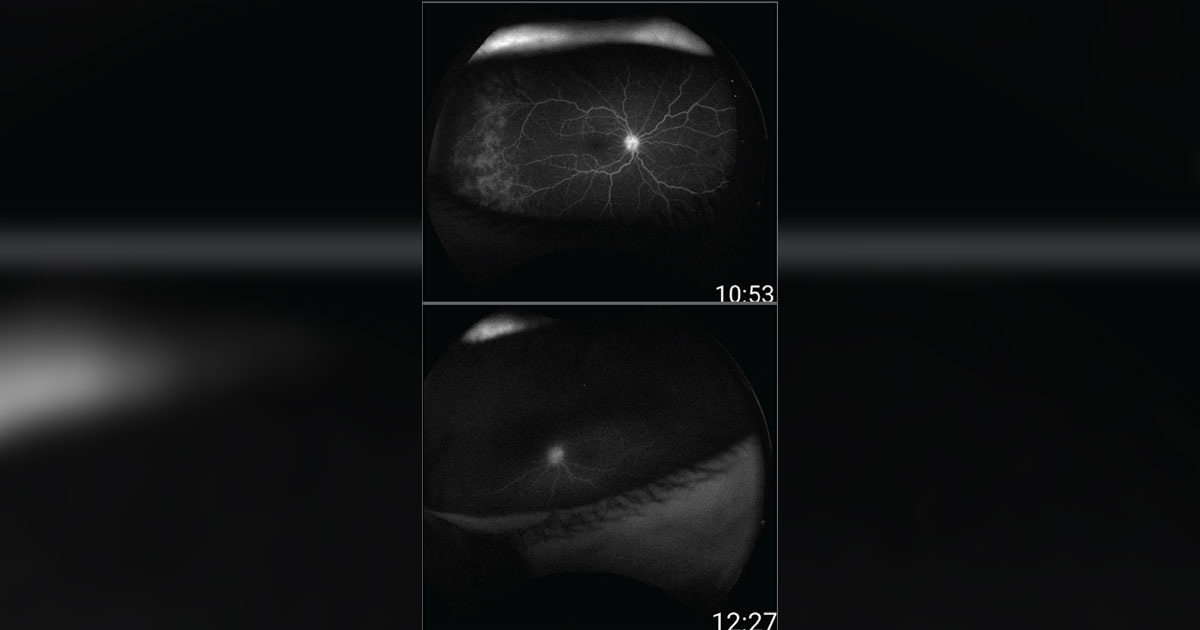
On follow-up with pediatric rheumatology, additional labs were ordered: C3 complement, C4 complement, TSH, free T4, anti-neutrophilic cytoplasmic antibody, Lyme antibody, anti-DNA antibody, anti-Smith antibody, SSA (Ro), SSB (La), hepatitis B surface antibody and antigen, hepatitis C antibody, varicella zoster antibody and urine protein/creatinine ratio. These results were ultimately all found to be negative.
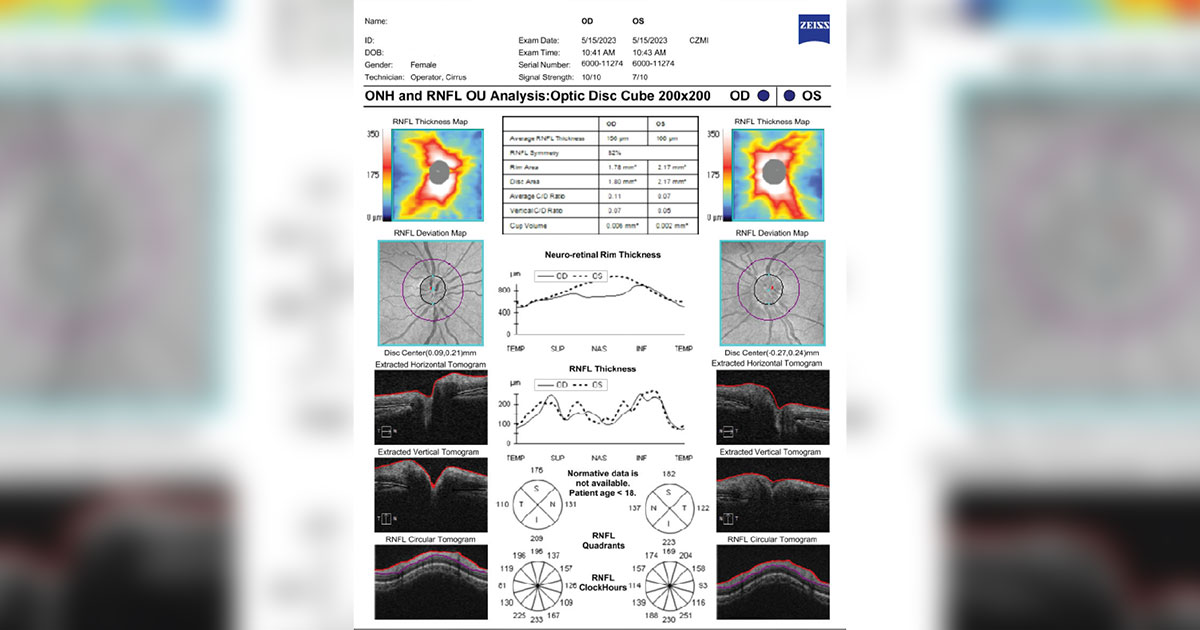
When the patient’s mother noted that she developed recurrent bilateral ocular injection, she was seen urgently in the ophthalmology clinic and found to have a new anterior chamber reaction in the right eye greater than the left eye. She was restarted on topical steroids and, with comanagement from rheumatology, started on weekly subcutaneous methotrexate with folate supplementation. On follow-up, her anterior chamber reaction and disc edema had improved (Figure 7), and subretinal fluid in the left eye had resolved (Figure 8).
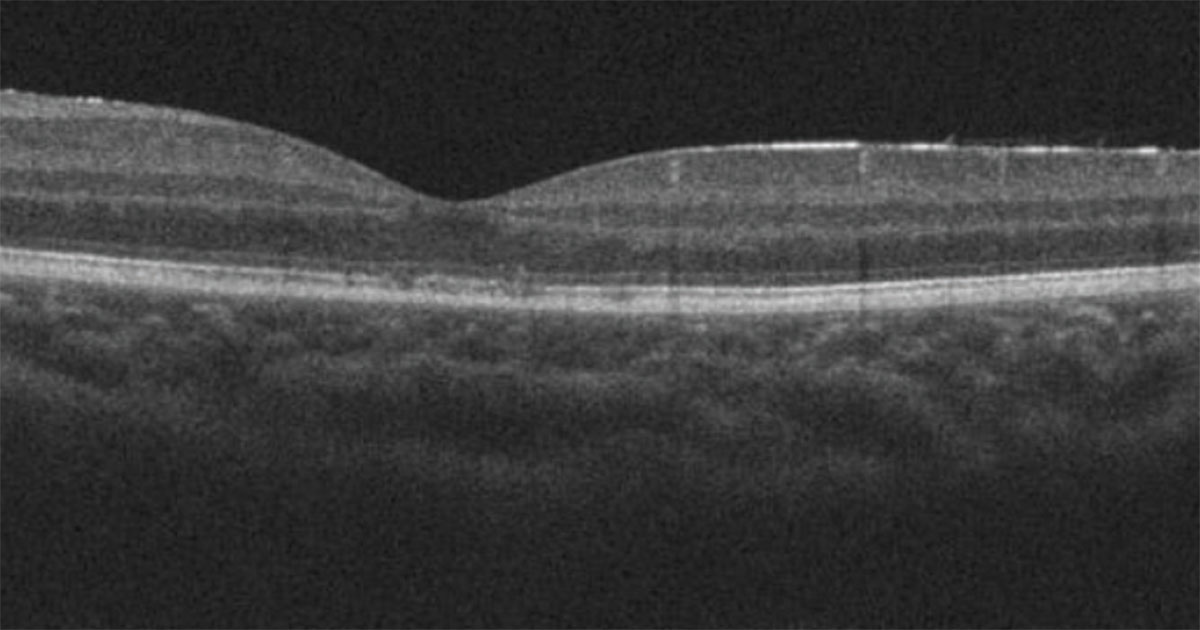
Discussion
Childhood uveitis presents unique challenges to ophthalmologists. Delay in diagnosis is not uncommon, as evidenced by this case, especially in children who are pre- or nonverbal, and may present with an indolent clinical picture without significant ocular complaints. Furthermore, obtaining a detailed ocular exam in children can be difficult. There is a significant burden on children and families as monitoring and treatment require frequent doctors’ appointments to a multidisciplinary care team involving ophthalmology, rheumatology and general pediatrics. Additionally, treatment is multimodal and requires significant parental support and monitoring. Poor adherence to treatment can have dire consequences, as children face high morbidity from uveitic sequelae, including band keratopathy, synechiae, cataracts and cystoid macular edema, all of which can be amblyogenic and may cause permanent vision loss if not treated promptly.
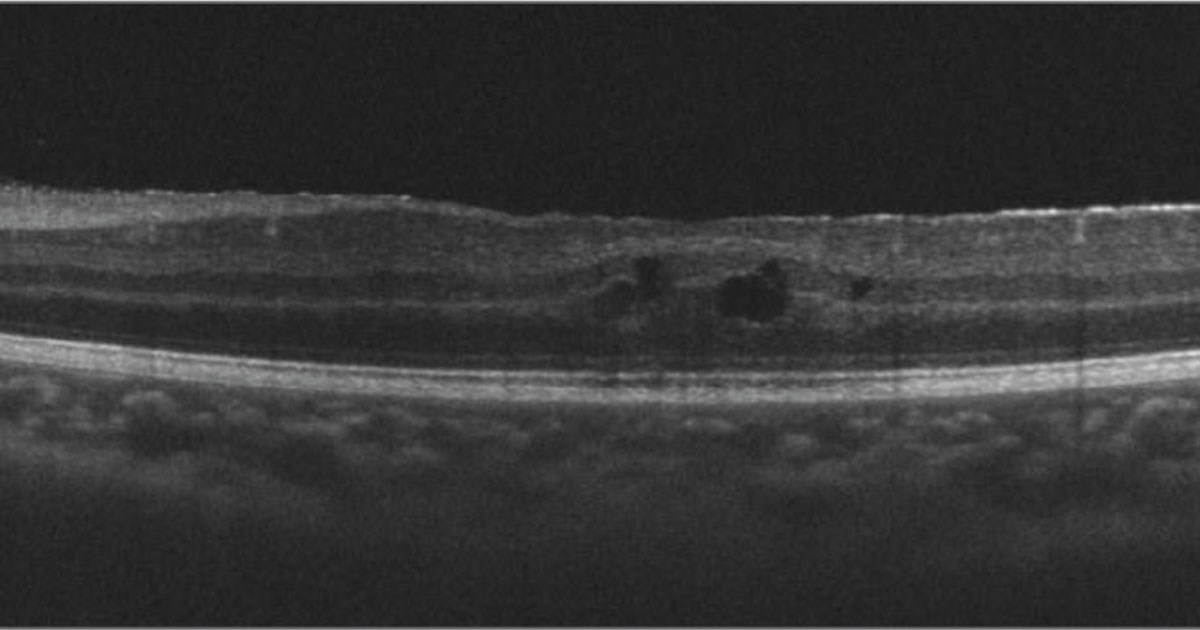
Additionally, the clinical side effects of systemic steroids and steroid-sparing immunosuppressants must be considered seriously in young children who may be more susceptible to adverse reactions. As seen in this case, treatment is generally approached in a stepwise fashion according to safety profile and demonstrated efficacy with the goal of achieving corticosteroid-free quiescence. Conventional immunomodulatory therapies including methotrexate, which is generally considered first line in the treatment of chronic noninfectious uveitis, are used initially. Biologic response modifiers such as adalimumab and infliximab are alternative options. Of note, the IL-6 inhibitor tocilizumab has shown promise in the treatment of noninfectious intermediate, posterior and panuveitis as well as severe and treatment-resistant JIA uveitis. Specifically, tocilizumab been shown to be particularly effective in treating resistant retinal edema. Because there is no single optimally effective treatment for noninfectious pediatric uveitis, vigilance and ongoing research remain crucial.
Clinical course continued
Over the next 9 months, the patient was followed closely by the uveitis and pediatric rheumatology teams. Her visual acuity remained stable with decreased vision in the left eye relative to the right eye. She achieved some periods of relative quiescence on a combination of systemic immunosuppressive therapy and topical steroids. However, when she was noted to again develop recurrent anterior chamber reaction and macular edema in the left eye (Figure 9) as well as increased disc edema, biweekly Humira (adalimumab, AbbVie) was added, and her methotrexate was switched from a subcutaneous to oral formulation. Unfortunately, the patient did not tolerate the oral methotrexate and after 2 months was discovered by her mother to have been surreptitiously throwing away her pills.
After switching again to a liquid formulation of methotrexate and continuing on Humira, the patient’s inflammation improved. She was referred for cataract surgery in the left eye due to concern for deprivation amblyopia but before surgery again developed recurrent inflammation requiring topical treatment. The options of increasing adalimumab dosing, starting intravenous infliximab or starting subcutaneous or intravenous Actemra (tocilizumab, Genentech) were discussed with her rheumatologist. The patient’s mother elected to start tocilizumab, so methotrexate and adalimumab were discontinued. At her most recent uveitis follow-up, the patient’s anterior chamber reaction was noted to be improved but not resolved. She will continue to be followed closely with further adjustment of her medications as needed.
- References:
- Edelsten C. Uveitis. In: Lyons CJ, et al, eds. Taylor and Hoyt’s Pediatric Ophthalmology and Strabismus. Elsevier Health Sciences; 2012:377-392.
- Iannone C, et al. Children (Basel). 2023;doi:10.3390/children10030434.
- Maleki A, et al. Surv Ophthalmol. 2022;doi:10.1016/j.survophthal.2021.06.006.
- McKay KM, et al. Ocul Immunol Inflamm. 2022;doi:10.1080/09273948.2021.1936565.
- For more information:
- Edited by Jonathan T. Caranfa, MD, PharmD, and Angell Shi, MD, of New England Eye Center, Tufts University School of Medicine. They can be reached at jcaranfa@tuftsmedicalcenter.org and ashi@tuftsmedicalcenter.org.









